When you watch every day thousands of people walk past you, new buildings and neighborhoods rise, and new shops and malls open, emigration seems to be a term in statistics.
However, it only takes to step off the capital’s sealed roads to see how emigration becomes an unlimited entity, a fate for thousands of families.
Mediamax begins the Armenia’s Shrinking Villages series, which will tell about the rural communities in Armenia where the population is quickly declining. The first destination of this series is Dashtadem village in Lori marz.
Village profile
Distance from Yerevan – 163km
Population – 120 people
Dashtadem is a village in Tashir (Kalinino) region of Lori marz. You can get to the town of Tashir by the 10km earth road, which wasn’t sealed even in the USSR. The last time Dashtadem residents saw their bur or microbus was in 1993.
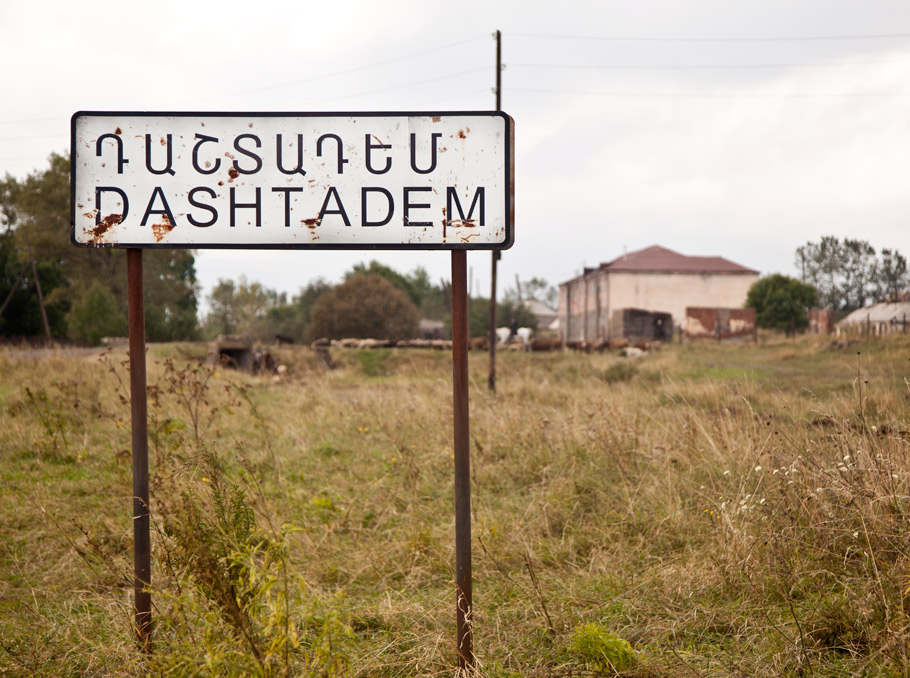 Dashtadem signboard
Dashtadem signboardPhoto: Mediamax
The village had more than 1000 residents until 1988, mostly Azeri people. Changing their houses for displaced Armenians’ comfortable apartments in Azerbaijan, they left Dashtadem. Refugee Armenians, who came to live in Dashtadem, also left the village in time, moving to Yerevan or emigrating. Today the village, once among the largest in the region, is in ruins and inhabited by just two dozen families.
Armenian mobile operators’ stations fail to provide proper connection in Dashtadem. Dashtadem is not that far from the Armenia-Georgia state border, so Georgian roaming turns on from time to time in some parts of the village.
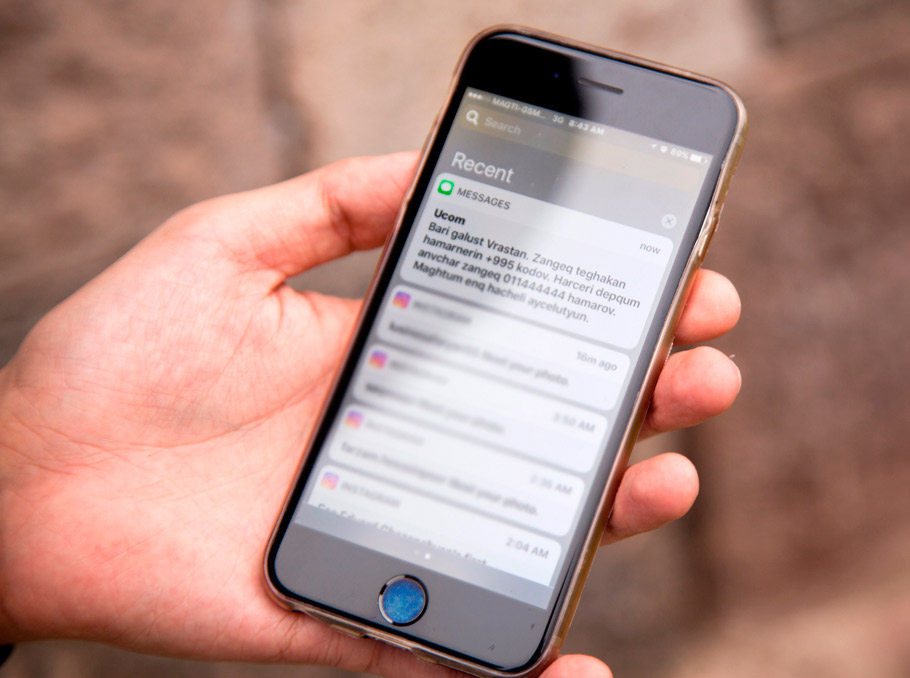 Message about roaming activation
Message about roaming activationPhoto: Mediamax
Either work abroad or cattle breeding
Shepherd Arayik was the first person we met upon entering the village. The young man had worked in Russia for several consecutive years, and he says he didn’t leave this year because he has a little child, so he stayed in Dashtadem and now earns for living by shepherding one of the villagers’ herd.
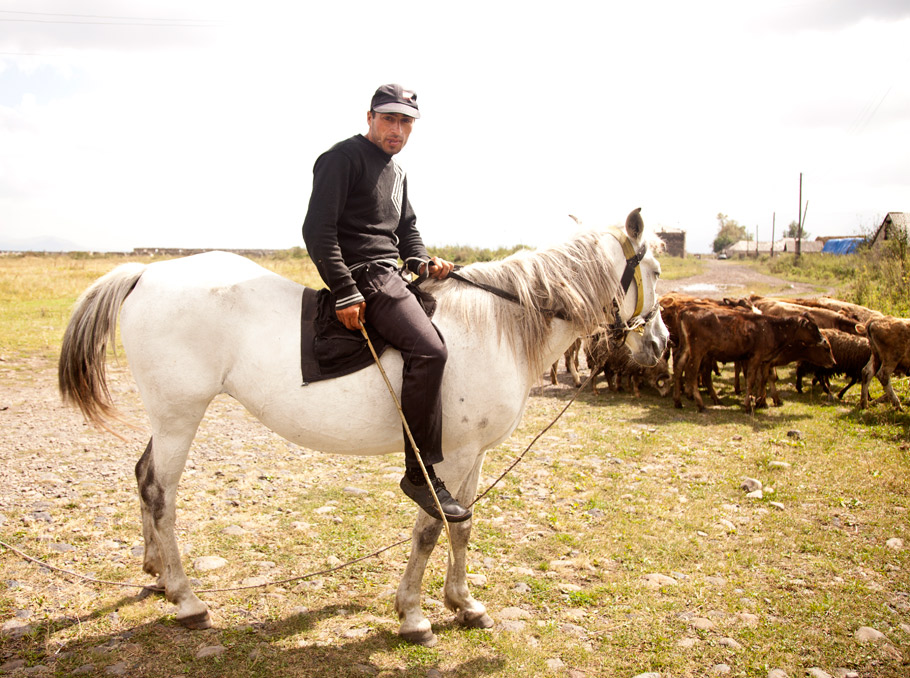 Arayik Mezhlumyan
Arayik MezhlumyanPhoto: Mediamax
“The only work options here are cattle breeding and food export. We take the milk to Tashir cheese factory, but milk from one or two cows isn’t enough to bring profit. You need a big herd, but only a few can afford it. Many people left in the course of these years, moved to Tashir, Vanadzor, Yerevan, Russia, wherever they could. Those who stayed struggle to get by,” Arayik says, riding the horse and letting the animals go in the front.
Arayik invites us to his house after this conversation, where we drink coffee and meet his uncle Haykaz Mezhlumyan, who also has to work abroad to provide for his family.
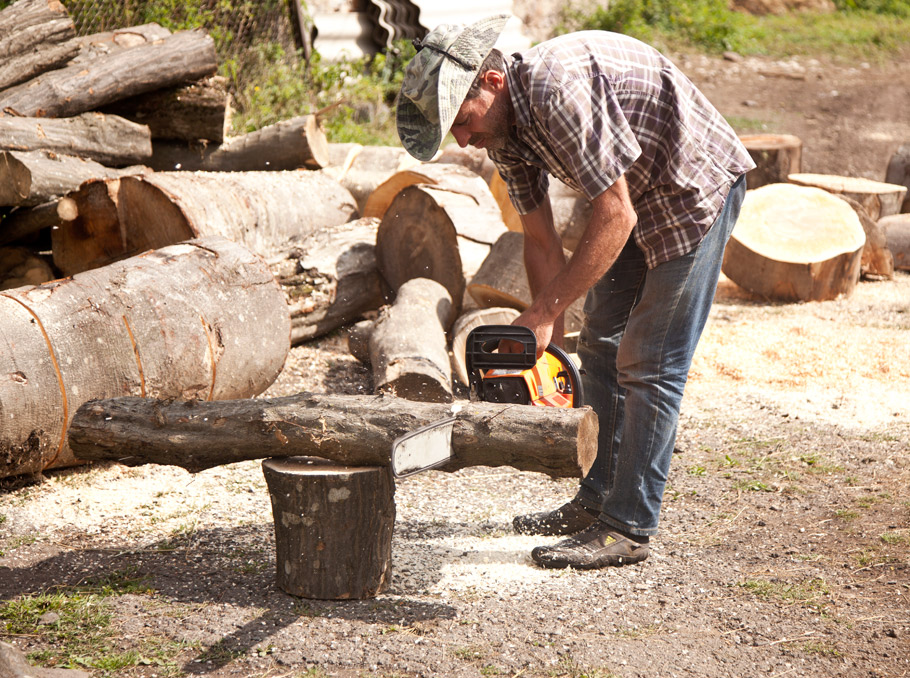 Haykaz Mezhlumyan
Haykaz Mezhlumyan Photo: Mediamax
“Kemerovo, Tomsk, Moscow, Saint Petersburg – I’ve been to half of Russia, and I’m leaving for a year again in a few days. I would stay in the village. Do you think I don’t miss my wife and children? Do you think I don’t want to stay home? I just don’t have any other option,” Haykaz tells, and agrees to pose for a picture. The Mezhlumyans are one of the largest families in the village, 3 out of 14 pupils in this community are from the Mezhlumyan family.
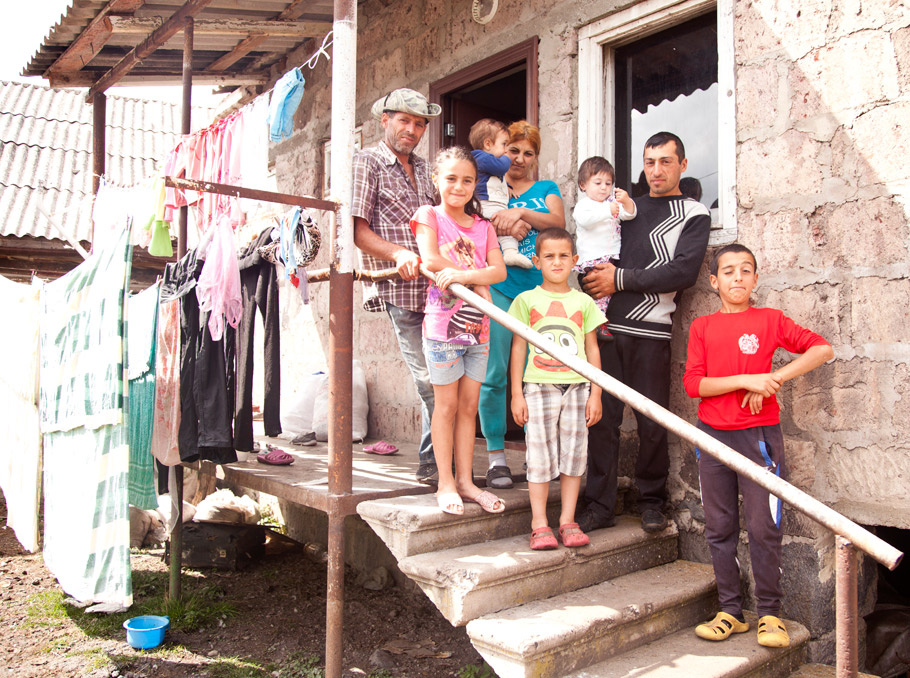 The Mezhlumyan family
The Mezhlumyan family Photo: Mediamax
Before the enlargement program
We continue our way around the village. The roads can be passed only by an off-roader, and ruins and abandoned houses are everywhere. The villagers tell that in the course of 20 years people would demolish their houses and sell the building materials, and with the sum from the deals they would buy one way tickets and leave to never come back.
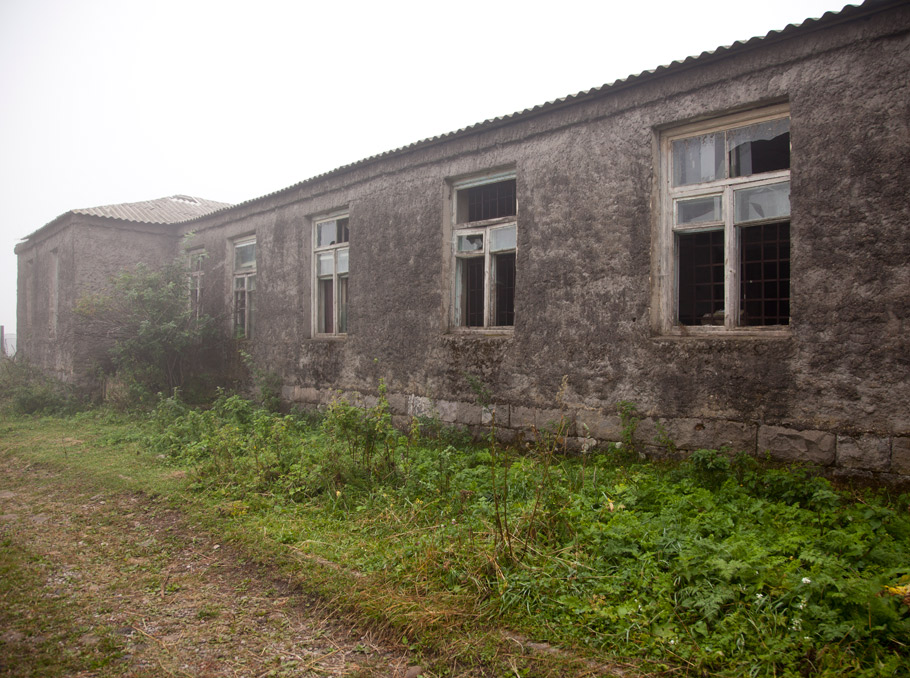 Abandoned houses in Dashtadem village
Abandoned houses in Dashtadem villagePhoto: Mediamax
After a several-hour walk, we decide to visit the village administration, and bypassing villagers show us the way to the house of the chief of the village Marine Khroyan. She turned one of the two inhabited houses into the local administration, as there is no government building in Dashtadem.
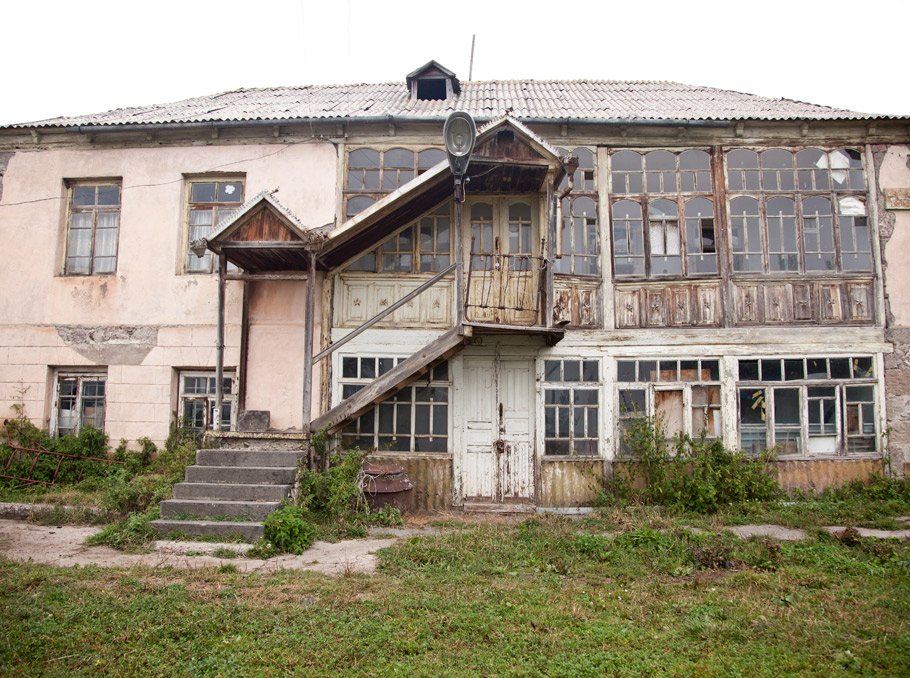 Dashtadem administration building
Dashtadem administration buildingPhoto: Mediamax
“I became the village chief four years ago. There were many problems, and only one of me. The state allocates AMD 7mln annually, which is only enough to pay salaries to the administration staff and satisfy minor expenses. We barely managed to solve the issues of water supply and leveling of the road. Our village has no kindergarten. Dashtadem will join Tashir town in 2017 by the enlargement program, and the budget won’t be in our hands anymore. The issue of school renovation will remain unsolved too, and the school might even get closed,” Marine Khroyan tells.
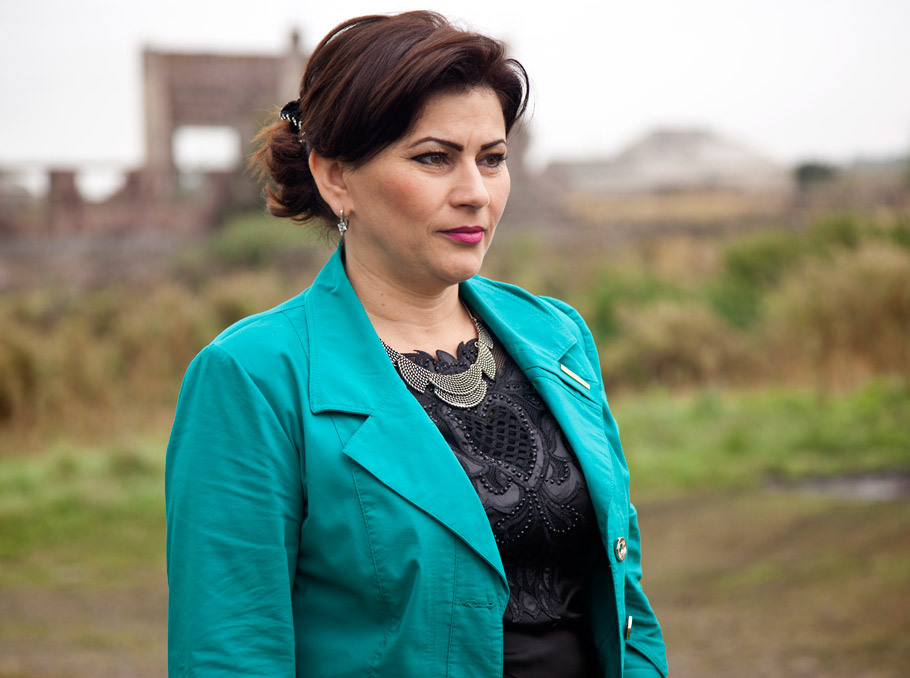 Village chief Marine Khroyan
Village chief Marine Khroyan Photo: Mediamax
The hope of Dashtadem – 14 pupils
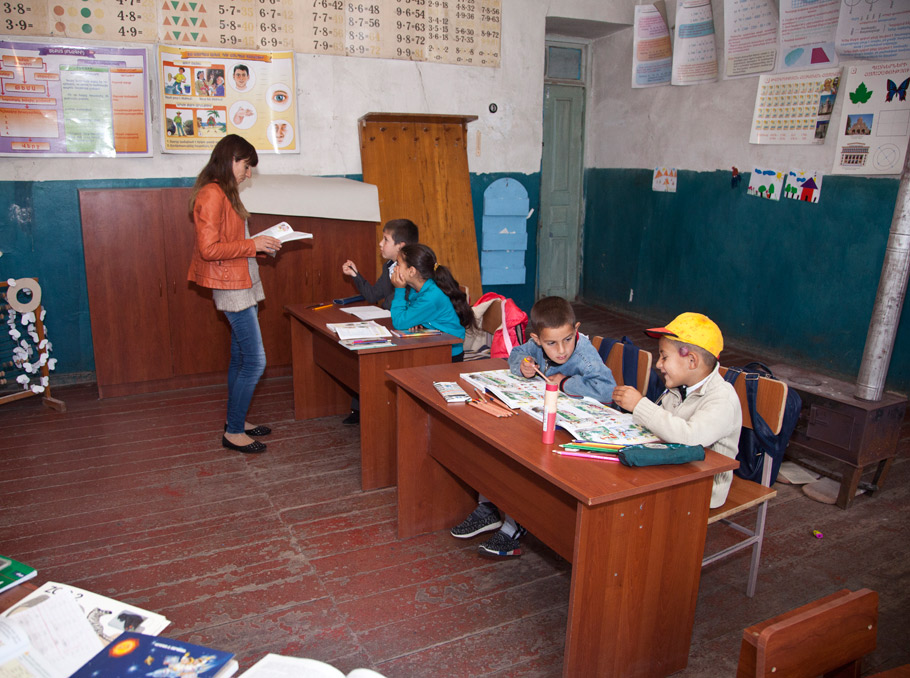 Pupils of the first, second and fourth classes
Pupils of the first, second and fourth classes Photo: Mediamax
The school is one of the oldest and largest buildings in the village, constructed in 1929. You won’t see active children running around with smartphones here. Only 14 pupils attend the three-storey school. Students of the first, second and fourth classes have lessons together. The teacher divides the usual 45 minutes of one lesson into three parts. Due to lack of specialists, one teacher teaches several subjects. This year Dashtadem has two first-year pupils.
 The two first-year students, Narek (on the left) and Artyom
The two first-year students, Narek (on the left) and Artyom Photo: Mediamax
Headmaster Sergey Aghajanyan cannot recall how many times they tried to get funds to renovate the school or at least the three classrooms they use. The budget can provide only the firewood and some necessary items.
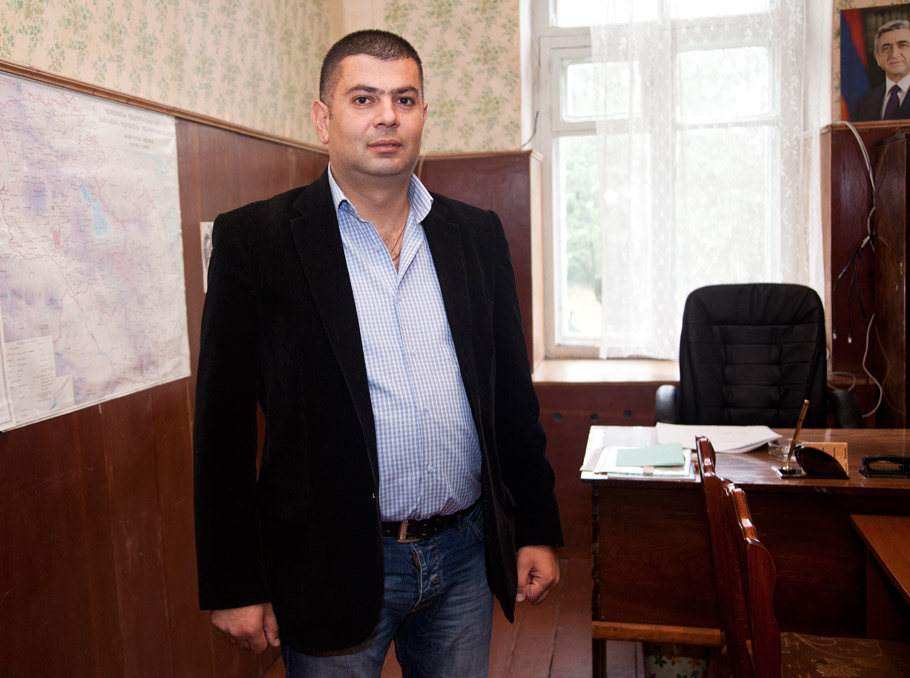 Headmaster Sergey Aghajanyan
Headmaster Sergey Aghajanyan Photo: Mediamax
“Many people leave the village and we cannot convince them to stay. One of the main reasons is the state of the school. People don’t want their children to get this kind of education. We don’t have enough teachers, so this year we started using the system of different year students studying together, which cannot ensure the standard level of education,” Sergey Aghajanyan said.
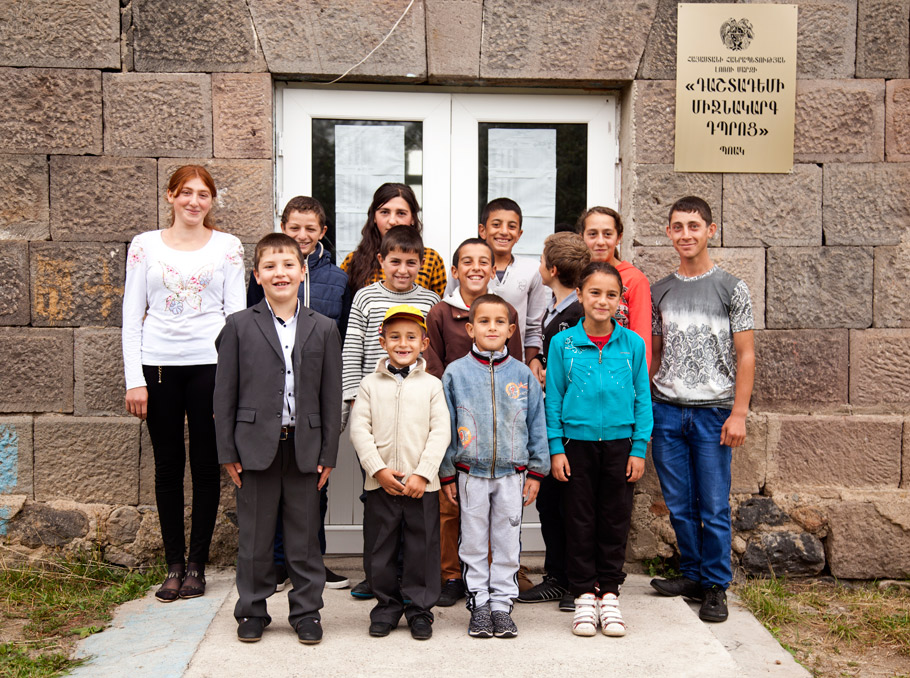 All pupils of Dashtadem
All pupils of Dashtadem Photo: Mediamax
Milk cheaper than water
At 7.30 a.m. we begin circling the village on the Tashir cheese factory car. Tashir-based driver Artur knows every house in Dashtadem, knows how many cows each villager owns, how much milk they bring to the factory and how much they earn.
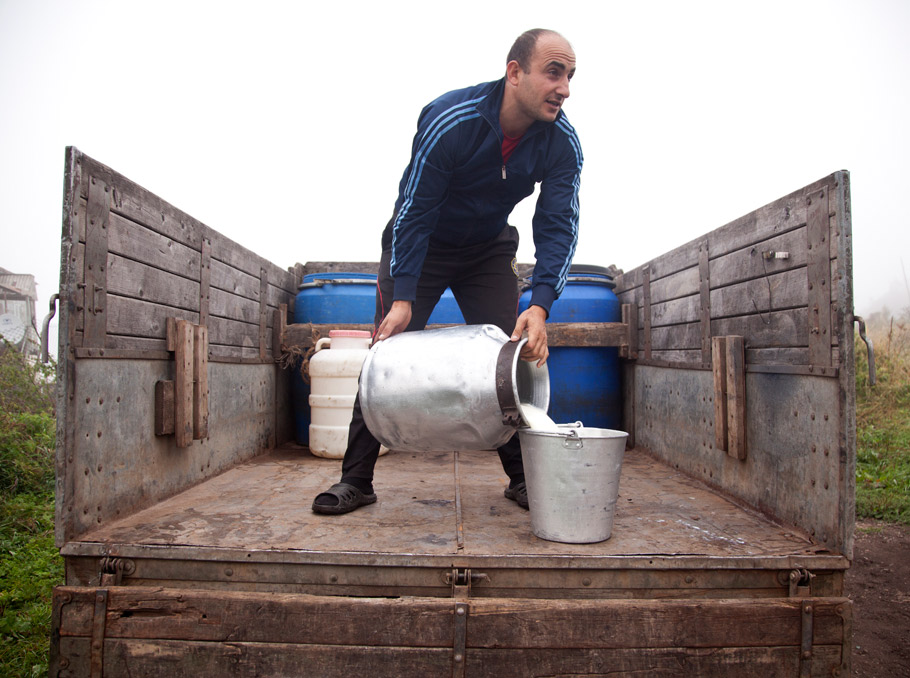 Milk barrel driver Artur
Milk barrel driver Artur Photo: Mediamax
“Dashtadem people would starve if not for the milk. Some people sell 6-7 liters and earn AMD 700-800 daily,” Artur says and fills the barrel with milk from Samvel Ghandilyan’s cows.
Samvel’s herd of 30 cows is the largest in the village. He says that people are paid so little for the milk that in the end, all they have is hard work and some beef.
 Samvel Ghandilyan
Samvel Ghandilyan Photo: Mediamax
“One liter of water costs approximately AMD 200 in the shops, and they buy liter of milk for AMD 120 from us. So the water is more expensive than whole milk. They used to pay AMD 170 per liter two or three years ago, then they lowered the price to AMD 90 and now made it AMD 120. Villagers are in the barn and field from 6 in the morning till 9 in the evening, working hard to keep one cow, in the end they have 7 liters of milk, and by profits from it they can buy fodder for winter, and that’s it,” Samvel Ghandilyan told.
 Artur and Samvel Ghandilyan
Artur and Samvel Ghandilyan Photo: Mediamax
The two days spent in Dashtadem gave a lot of food for thought. When ruins are more plenty in the village than the smoke coming out from the chimneys, and the number of teachers is almost equal to the number of students, there is a nearly zero possibility that there will still be a Dashtadem village here in 10-15 years.
Suren Stepanyan
Photos by Emin Aristakesyan




















Comments
Dear visitors, You can place your opinion on the material using your Facebook account. Please, be polite and follow our simple rules: you are not allowed to make off - topic comments, place advertisements, use abusive and filthy language. The editorial staff reserves the right to moderate and delete comments in case of breach of the rules.